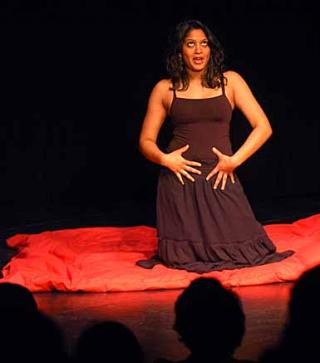How long should a song be for an audition?
The key to getting noticed in the audition room is knowing exactly how long to sing — and what to leave out.
(By Javier Guerra)

Why Length Matters in Auditions
When it comes to auditions, especially for musical theater or film roles requiring singing, song length can make or break your first impression. Casting directors have limited time to see dozens, sometimes hundreds, of auditionees in a single day. If your song is too long, you may be cut off before you reach the climax. If it’s too short, you may not fully showcase your talent. Striking the right balance is crucial.
The industry standard often falls between 16 and 32 bars of music. This translates to about 30 to 90 seconds of singing — but the style, tempo, and structure of the song can influence that significantly.
Understanding the 16-Bar and 32-Bar Cuts
A “16-bar cut” doesn’t mean singing 16 literal measures from the start of a song. It usually means selecting the most compelling 30–45 seconds — often the climax or a powerful moment that shows off your range, character, and musicality. A “32-bar cut” is a longer version, around 60–90 seconds, giving more room to build a story or emotional arc.
Example:
A 16-bar cut of “On My Own” from Les Misérables might jump straight into the emotional bridge section.
A 32-bar cut of “Defying Gravity” from Wicked might start with a few lines of context and then build to a key change.
Audition Type Dictates Song Length
Different types of auditions require different approaches. Understanding the context is essential.
1. Open Calls and ECCs (Equity Chorus Calls):
Time is extremely limited. Singers are often asked for 16-bar cuts. You’ll want something short, sweet, and memorable.
2. Callbacks:
You may be asked for a full song or multiple selections. Here, casting directors want to see your stamina and storytelling ability.
3. Agent or Showcase Auditions:
These may lean toward a full-length performance (2–3 minutes), especially if the panel is smaller and time is more flexible.
Example:
At a New York ECC for Hamilton, an actor might prepare a 16-bar cut of a fast-paced hip-hop track, while a callback might require a full version of “Wait for It.”
How to Choose the Right Cut
Start by identifying the emotional high point of the song. This is often where your voice and acting skills shine brightest. Avoid lengthy intros or repetitive verses.
Tips:
Skip instrumental breaks unless essential.
Focus on parts with dynamic vocal shifts.
Include contrasting moods if possible.
Example:
Instead of singing the entire song “She Used to Be Mine” from Waitress, choose the portion that starts with “She is messy, but she’s kind…” and ends with a strong sustained note. This 16-bar section gives emotion, vocal build, and clarity.
Should You Ever Sing the Full Song?
In most initial auditions, no — unless explicitly asked. But in callbacks, professional showcases, or video auditions, a full song may be appropriate.
Casting directors often appreciate brevity and precision. They want to know if you can follow instructions and make smart artistic choices. Long-winded performances can feel indulgent or unprepared.
Exceptions:
Self-tape auditions may give you freedom to record a full piece.
Industry showcases sometimes encourage full-length songs (2.5–3 minutes max).
Best Songs to Use for Short Auditions
Some songs naturally lend themselves to shorter audition cuts.
Good 16-Bar Examples:
“Giants in the Sky” (Into the Woods) – Jump into the middle narrative.
“Still Hurting” (The Last Five Years) – Use the haunting chorus line.
“Corner of the Sky” (Pippin) – Begin with “Rivers belong where they can ramble…”
Good 32-Bar Examples:
“Santa Fe” (Newsies) – Start with emotional build, end with longing line.
“Gimme Gimme” (Thoroughly Modern Millie) – Use the upbeat section that builds vocally.
Avoid songs that take too long to “get going” or require a full backstory to make sense.
Do’s and Don’ts of Audition Song Length
Do:
Time your song during rehearsal with a stopwatch.
Practice cuts in front of a coach or trusted friend.
Bring sheet music clearly marked with your start and end.
Don’t:
Go over the time limit, even if the climax is amazing.
Apologize for your cut. Own it.
Choose songs with excessive repetition or long intros.
Pro Tip:
Have both a 16-bar and 32-bar version ready. If the panel asks for “more,” you can immediately pick up where you left off.
What If the Audition Doesn’t Specify?
If no specific instructions are given, default to a 32-bar cut. It shows more range and storytelling without overwhelming the panel.
You can also call or email the audition contact for clarification. It demonstrates professionalism and interest. However, if you don’t hear back, a 32-bar version is a safe, flexible choice.
Example Scenario:
An audition notice for a student film says: “Bring a musical selection.” Since no time limit is mentioned, prepare a 32-bar song and have a 16-bar backup in case time is tight.
How to Mark Your Sheet Music
If you’re bringing sheet music for a pianist, mark it clearly:
Use a highlighter to show the start and end.
Write in tempo changes or cues.
Indicate cuts with brackets or slash marks.
Always include the title, composer, and tempo at the top.
Tip: Neatly taped pages or printouts in a binder are preferred. Loose sheets can be a disaster.
Final Thoughts: Quality Over Quantity
Ultimately, the length of your audition song should serve your performance. In a short time, you must tell a story, connect emotionally, and show your vocal ability. Think of your audition cut like a movie trailer — just enough to intrigue, impress, and leave them wanting more.
Summarized Guidelines:
16-bar cut: ~30–45 seconds
32-bar cut: ~60–90 seconds
Full song: Only when requested
Be strategic, be concise, and above all, be memorable.



